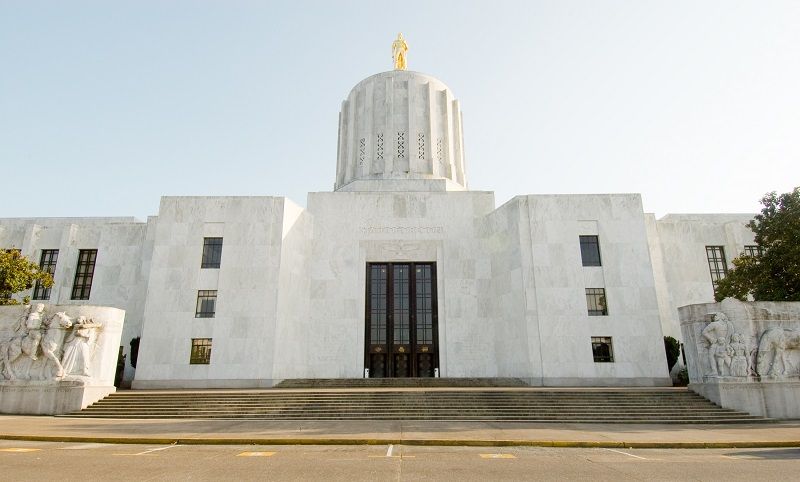Recently, The Oregonian published a feature story about the Portland Seed Fund. This is a two-year-old “public-private” venture capital fund designed to help start-up companies. To date, the Fund has chosen 17 companies to work with, and each one has received $25,000. The public money includes $800,000 from Portland, $500,000 from the Oregon Growth Account (a state-run fund financed with Oregon Lottery dollars), and $250,000 from Hillsboro. This is blended with roughly equal amounts of money from private investors.
The Oregonian put a very positive spin on the concept. “We’ve learned that the model can really work in Portland,” said Jim Houston, one of the two fund managers. Amber Case, whose company Geoloqi received support last year, said, “I think it’s really important for the city [Portland] to be involved because it shows that they care.” Jefferson Smith, a state legislator running for mayor of Portland, added that the fund represents an opportunity to “build on what we’re good at.”
This is the way it always is with public slush funds. Politicians, fund managers, grant recipients, and editorial board writers all think it’s a great idea to hire smart people to sit at a roulette wheel with public money and pretend that they are making great public investments. There is never a concern that maybe this is not a proper role for government, nor is there a willingness to learn from history. And one doesn’t have to go too far back in time to learn.
The Oregon Growth Account, for example, was created by the state legislature in 1995. It was funded with state lottery dollars, and its mission was to “launch and expand young Oregon companies” (funds could not be spent out of state, even if the in-state opportunities were mediocre). As of March 2011, the fund had $105 million in various accounts.
In a January 2011 memo to the Oregon legislative assembly, fund managers admitted, “The internal rate of return since inception is negative 7.9%. The current value of the OGA portfolio is less than the money that has been invested to date.”
Not satisfied with this failure, in 2001 the state legislature created the Oregon Resource and Technology Development Subaccount (ORTDS) within the OGA. The legislative mandate was to “make seed capital investments in emerging growth businesses,” which sounds a lot like the mission of the OGA itself. The legislation stipulated that the first $4 million of funds credited to the OGA be allocated to the subaccount, in addition to a direct allocation of $5 million from the legislature. As of September 20, 2010, this fund had a return of negative 17.8%.
Of course these are just parochial Oregon experiences, but history repeats itself everywhere. Few people remember, but at the turn of 19th century, consumers could buy new-fangled horseless carriages from three distinct categories―steam-powered, electric, or gasoline-powered with the internal combustion engine. It was not at all clear which technology would become dominant. A great deal of money was lost by private investors betting on steam-powered or electric cars.
If a politician had decided to pick the internal combustion engine and wanted to spend tax funds subsidizing hot start-ups, the name Henry Ford probably would have emerged. In retrospect, this sounds like it really would have paid off―except for the fact that between 1899 and 1903 Henry Ford founded, and bankrupted, two motor vehicle companies. He didn’t become successful until he formed the Ford Motor Company in June of 1903.
So how would politicians have known in 1899 which of the Ford companies was going to change the world? They wouldn’t have. Nor could they have successfully picked any other great companies. Between 1900 and 1908, 502 car manufacturers were launched in the U.S., and 302 either folded or shifted to another line of business. Most companies formed before 1905 never paid back a cent to investors, and the majority never built a single car.
This should be humbling to anyone charged with managing public funds, but Oregon politicians are infatuated with the idea of designating certain economic sectors as “the next big thing” and then subsidizing them with tax dollars. Sometimes they even double down by mandating that we also buy the products of politically chosen industries, such as the requirement that Oregon electric utilities purchase 25% of their electricity from money-losing “green power” sources like windmills and solar panels.
Unfortunately, a dynamic market economy doesn’t work that way. Consumer preferences can change in a moment, technology becomes obsolete, and old businesses are supplanted by competitors in a never-ending process of “creative destruction.” It’s a fool’s errand to think that politicians and their appointed underlings can predict the future successfully. Nobody can predict the future, so the only people who should invest in start-ups are private individuals gambling with their own money.
The state legislature will reconvene in February. One of the first orders of business should be to euthanize every state-sponsored “investment” fund. Subsidizing politically chosen private firms is simply not a proper role for government, regardless of the return on investment.
John A. Charles, Jr. is President and CEO of Cascade Policy Institute, Oregon’s free market public policy research organization.











